10 Lesser Known Classic Arcade Fighting Games You Should Play!
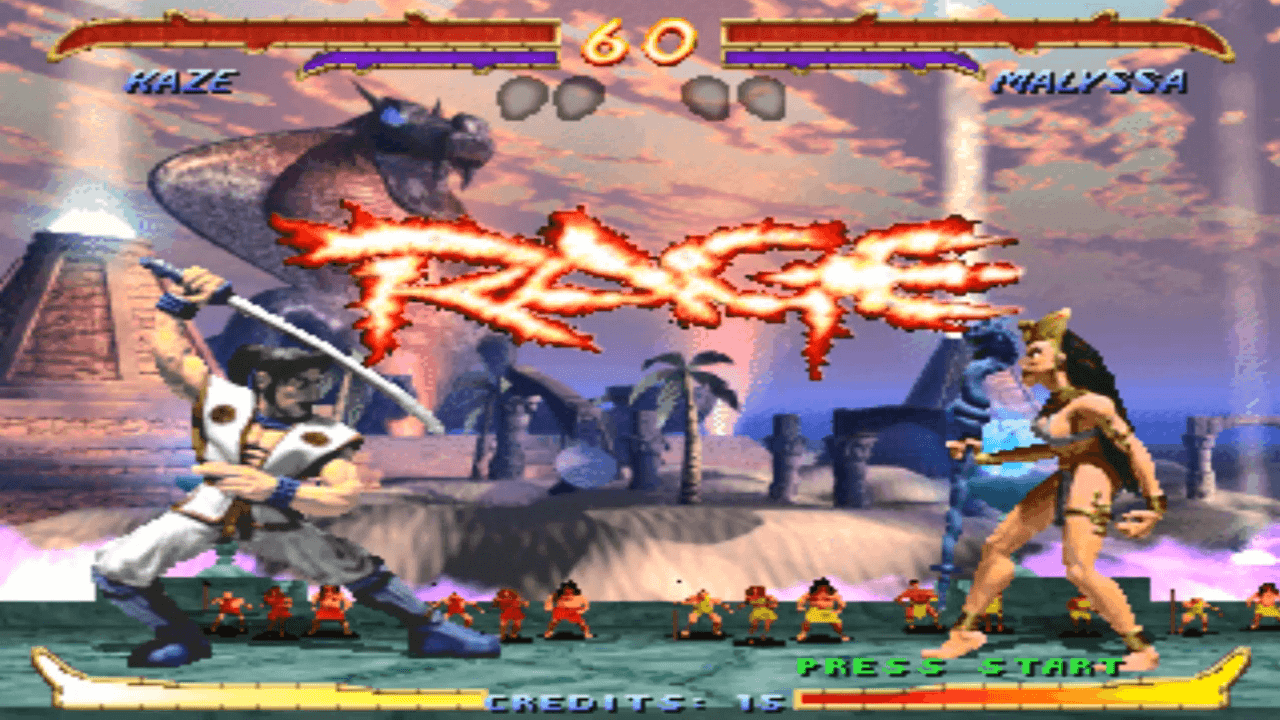
When we think of arcade fighting games the first names to come to mind are often the more notable Street Fighter and Mortal Kombat series. But, for every fighting game series that became a legend, it seems many more classic fighting titles fell by the wayside and never got the credit they so greatly deserved. Here we're going to take a look back at a number well-rounded classic arcade fighting gems that, while being lesser known by the gaming masses, were truly arcade masterpieces in their own right.
All of the videos and graphics provided in the examples shown here are the property and work of myself and my gaming media organization Gamers Bay! Likewise, all games mentioned here are showcased with a corresponding video preview.
1. Martial Masters (IGS 1999)
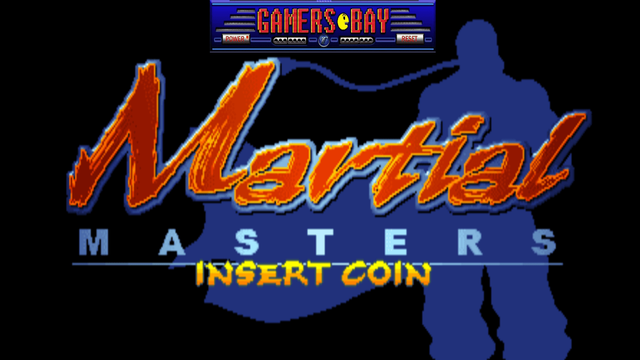
Having lived throughout the rise and fall of the classic arcades, there's no doubt I've probably played every arcade fighting title known to man-kind. If there was one such fighting title that truly stood out among the crowd over the decades, and one that made a lasting impression, it was probably Martial Masters!
Developed and published by International Games Systems back in 1999, Martial Masters was an arcade fighting treasure that paid homage to a number of Hong Kong based classic martial arts films and the iconic characters they represented; such as the 1978 masterpiece Drunken Master, Once Upon a Time in China (1991), and Operation Scorpio (1992).
One of the more notable characters, “Beggar So” (AKA “The Drunken Master”), or simply known as “Drunk Master” in the game, just so happened to be one of the more well rounded characters. Despite his his drunken stupor, he's actually quite calculated with his attacks.
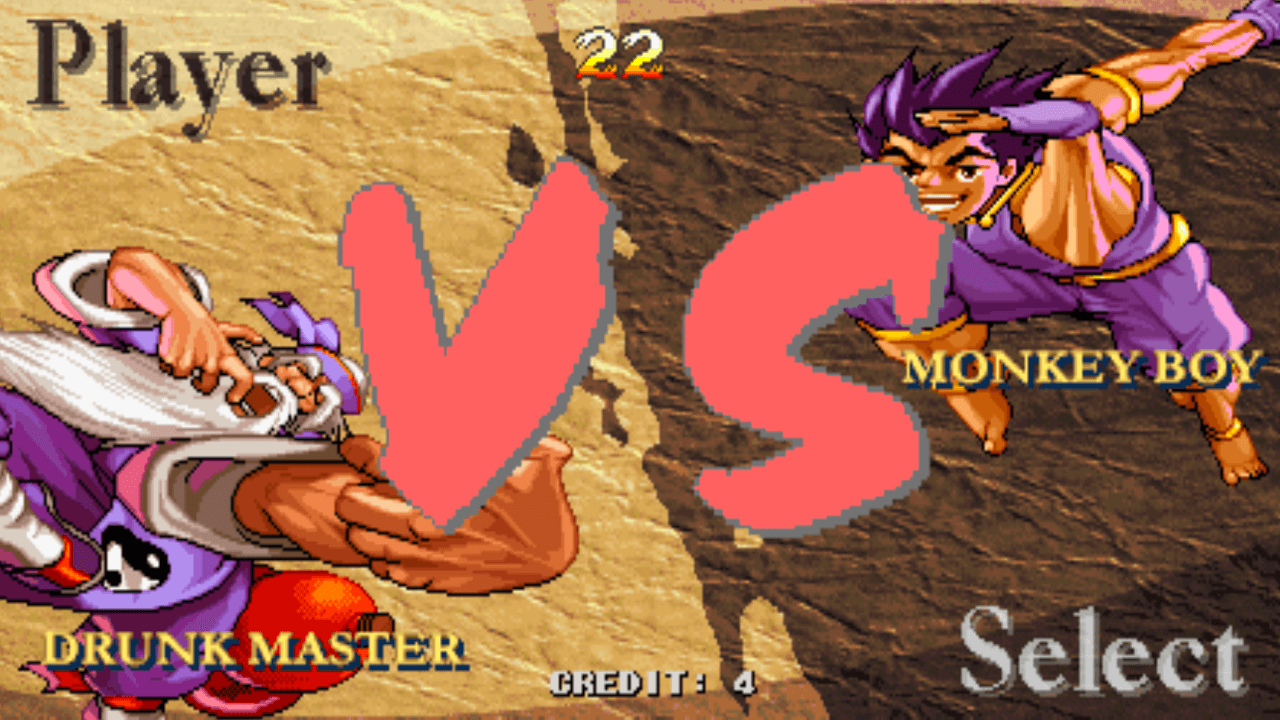
Part of what made Martial Masters such a compelling fighting game was its use of finely detailed 2D sprites, followed with graphically inspiring shadow attacks! The game also got something down that many previous fighting titles did not, the use of effective long chain combos coupled with power attacks.
The game even brought forth The Drunken Master's most comedic character of the film, Wong Fei-Hung, who's character in the original movie was played by the famous martial artist Jackie Chan! Surprisingly, a lot of those who've played Martial Masters had no idea that Jackie Chan was actually depicted as one of the characters in the game.
Another notable character in this game was Soajin, who's character is taken from the film “Thirteenth Aunt”, a film that was part of the broader Once Upon a Time in China series that often featured Jet-Li as one of the series lead protagonists known as Wong Fei-Hung.
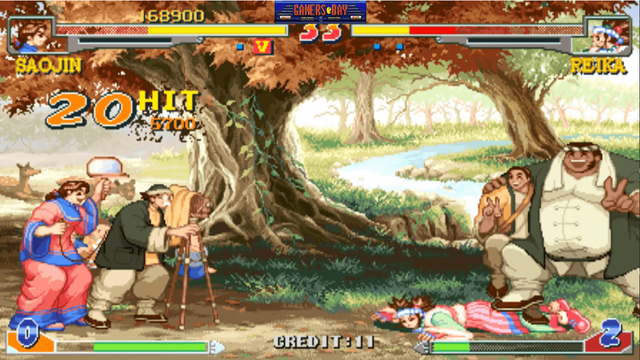
What makes Soajin so interesting is the fact she has helper characters, “Leung Foon”, “Lam Sai Wing”, and “Bucket So” (all disciples of master Fei-Hung), who come out and gang up on Soajin's opponents as one of her special attack maneuvers. After beating down Soajin's opponents, the disciples pose for a picture.
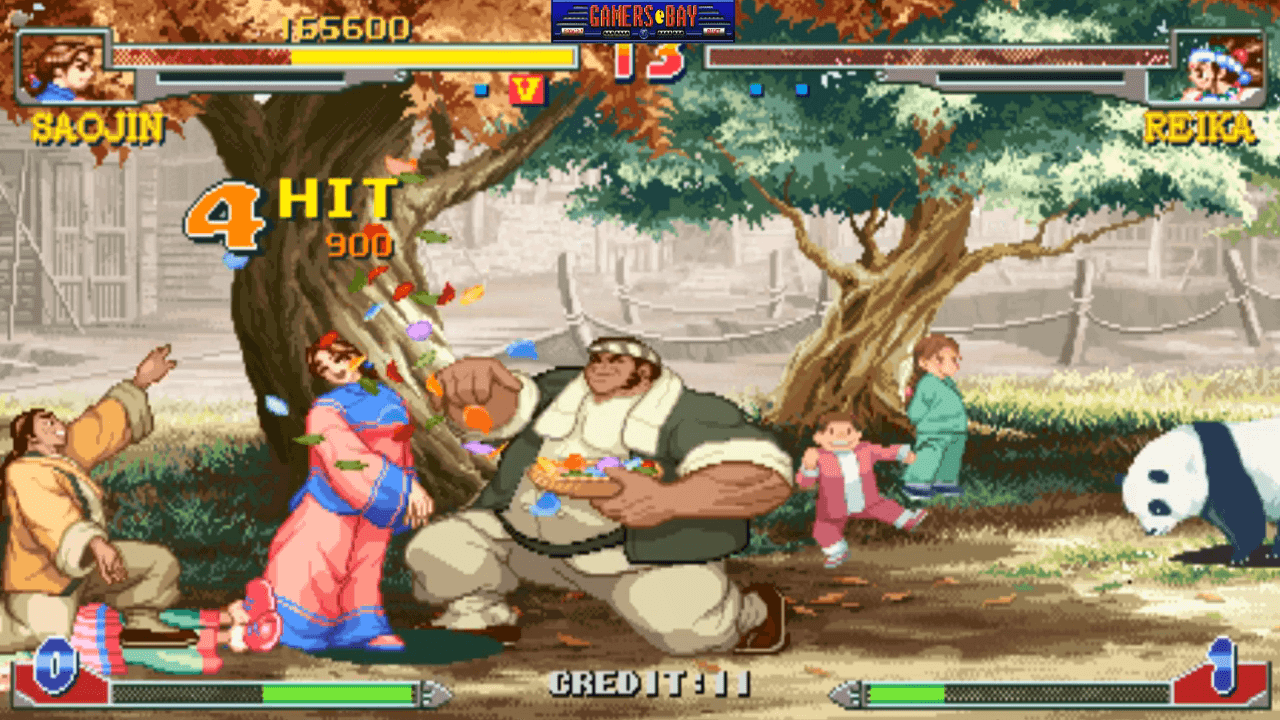
2. Jackie Chan – The Kung-Fu Master:
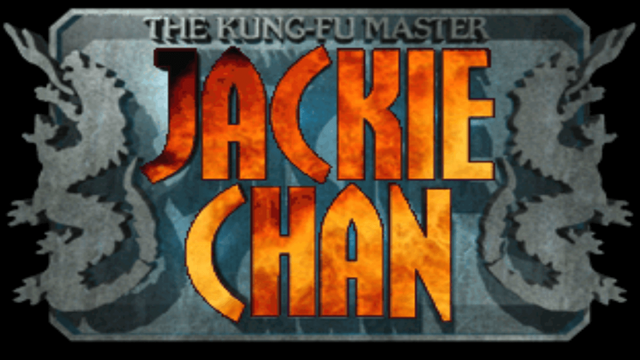
Surprisingly, Jackie's first appearance in the arcades wasn't in Martial Masters, but rather in his own official arcade fighting title called Kung-Fu Master! Let's face it, Jackie Chan was and still is a true martial arts legend in his own rights; likely as legendary as the iconic Bruce Lee, so it wasn't surprising to see a fighting game made in his honor.
Jackie Chan's The Kung-Fu Master, was developed and published by Kaneko back in 1995, and part of what made this game so great was the fact the developers used digitized images of real human actors to depict all of the characters showcased in the game, including Jackie Chan himself! In fact, the game featured three variations of Chan, all taken from various films he starred in, including Project A, The Drunken Master, and Snake in The Eagles Shadow.
There's also an interesting story that surrounds the development of this game. You see, back in the early 1990's Golden Harvest Productions was actively seeking sponsors to help fund an upcoming Jackie Chan film, Thunderbolt! After Golden Harvest approached Kaneko with a proposition to invest in the upcoming film, Kaneko responded with a surprise proposal, why not allow us to develop a fighting game in Chan's honor?
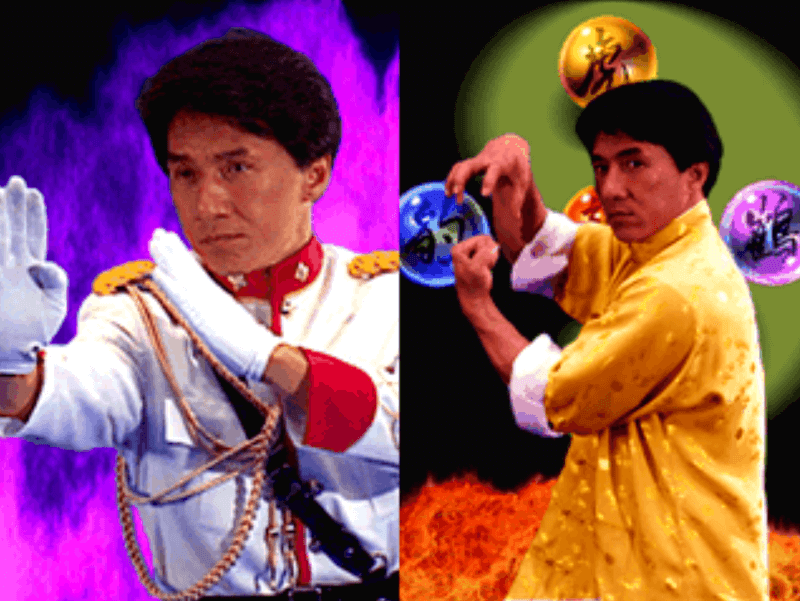
Unlike Chan's depiction in Martial Masters, The Kung-Fu Master actually featured the real Chan in real hand-to-hand combat!
Kaneko clearly played off the concept of games like Midway's Mortal Kombat, and Atari's Pit Fighter, with their depiction of real human actors being pitted as characters in a video game. Back in the early 90's a lot of the focus in the game development world was geared towards depicting realism in video games.
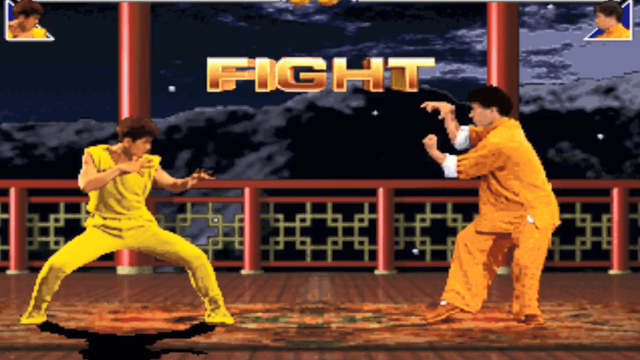
While the game allowed for players to play as all three variations of Chan, all are locked from the start of the game, forcing players to beat opponents as the game progresses in order to unlock each subsequent variation of his character.
Besides the ability to play as Jackie Chan himself, along with a number of iconic characters from his many classic films, one of the playable characters was actually a dragon, can't go wrong!
Despite Chan's many achievements in films, sadly, his arcade titles never lived up to the same level of fortune as his films did, and game's like Kung-Fu Master were largely overlooked by arcade operators and the wider public back in the 90's.
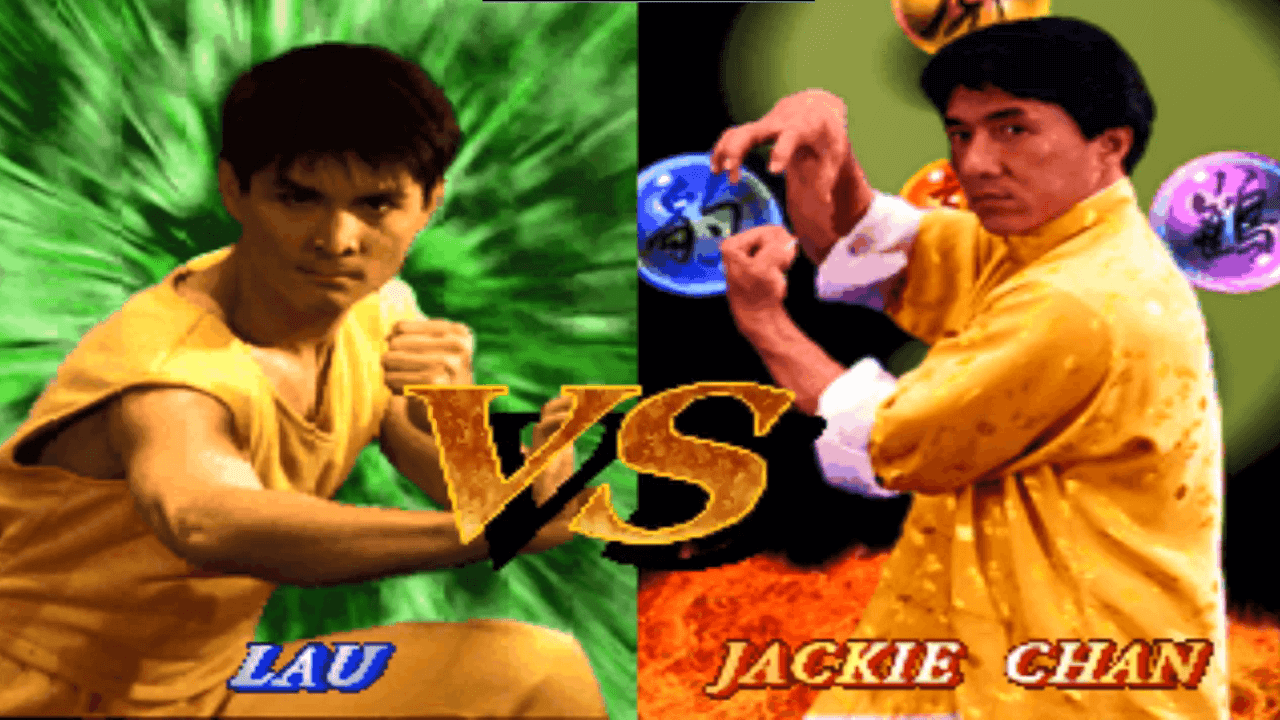
What's more, Kaneko actually followed up the original game with a beefed up version called “Jackie Chan in Fists of Fire!” This game came out less than a year later, and unlike the previous version, the new version featured the ability to play as Chan right from the beginning of the game.
Fist of Fire also featured far more polished graphics than the original game, along with new fighting maneuvers.
3. Tech Romancer (Capcom):
Well, there's hardly anything romantic about a bunch of robots battling it out for supremacy, but Tech Romancer was truly an amazing mech fighting game in its own right! Developed and published by Capcom for the arcades back in 1998, this wasn't Capcom's first shot at developing mech based titles, but Tech Romancer offered some features that truly set it apart from its arcade counterparts.
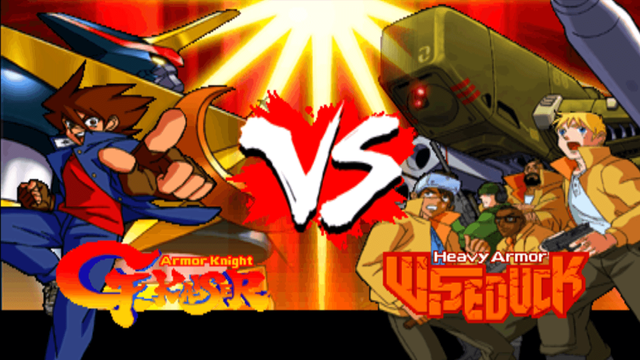
Unlike previous Capcom based mech titles that followed a more linear progression and depicted side-scrolling battles; such as Cyber Bots: Full Metal Madness (also an arcade fighting game), and Armored Warriors (an action-adventure themed, side scrolling, arcade brawler), Tech Romancer's game play was plotted on a 3D plane.
Tech Romancer featured true 3D visuals spread over a 3-Dimensional playing field, coupled with Japanese Anime based cinematic cut-scenes that would easily remind one of the classic Speed Racer cartoon series, and featured characterizations that were wholeheartedly reminiscent of the classic Transformers series as well. For those who grew up watching the Transformers, I would assume there's a lot to love with games like this.
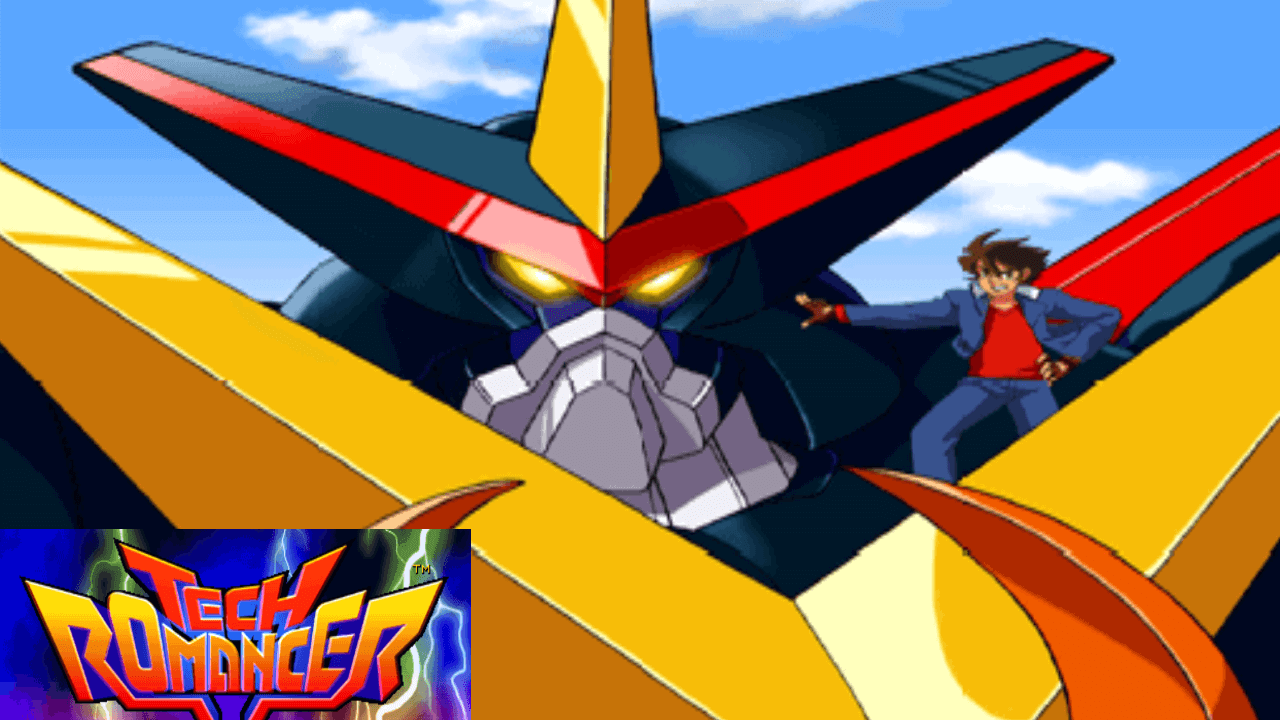
Sadly, this fighting masterpiece came to fruition at time when American arcades were massively on the decline, as advances in home gaming consoles took a huge one-up on their arcade counterparts moving into the early 2000's. For that reason, it was largely overlooked in the North American arcade landscapes. Luckily, this was one of those arcade fighting titles that did however find its way to various home consoles, such as the Sega Dreamcast.
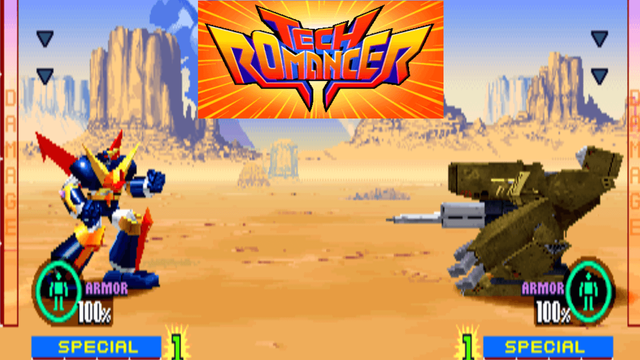
The game also featured 2 modes of play, a story mode (awesome anime inspired and cartoon like cinematic story-line) and a Hero Challenge mode (Arcade mode).
Oh, and those compelling anime-inspired cut scenes, those were created by the Japanese design studio, “Studio Neu.”
Besides the game's 3-Dimensional characteristics, the bots all had unique abilities and weapons to boot, including booster packs that pumped your character high into the air, allowing for mid-air missile and rocket attacks.
4. Primal Rage II (Atari)

image source - gamers bay on giphy
This was intended to be the updated sequel to Atari's original arcade fighting title of prehistoric god-like beasts set in a post apocalyptic world called “Urth.” Sadly, Primal Rage II never saw the light of day in arcades, as the project was scrapped in early 2006, despite reassurances from the game series lead developer Ken Humphries it was very much still in development at the beginning of that year.
To date, there are only 2 known test boards in existence, with one of them being a complete and working arcade cabinet, including the original artwork, that was acquired by the Galloping Ghost Arcade in Brookfield Illinois.
More than 2 decades would pass before an independent developer only known as Gruntzilla94 would finally crack the game and get it working in a specially modified version of MAME he developed himself called MAME4RAGE. Previously, a dump of the original Primal Rage II ROM had circulated the internet for years without ever being properly emulated.
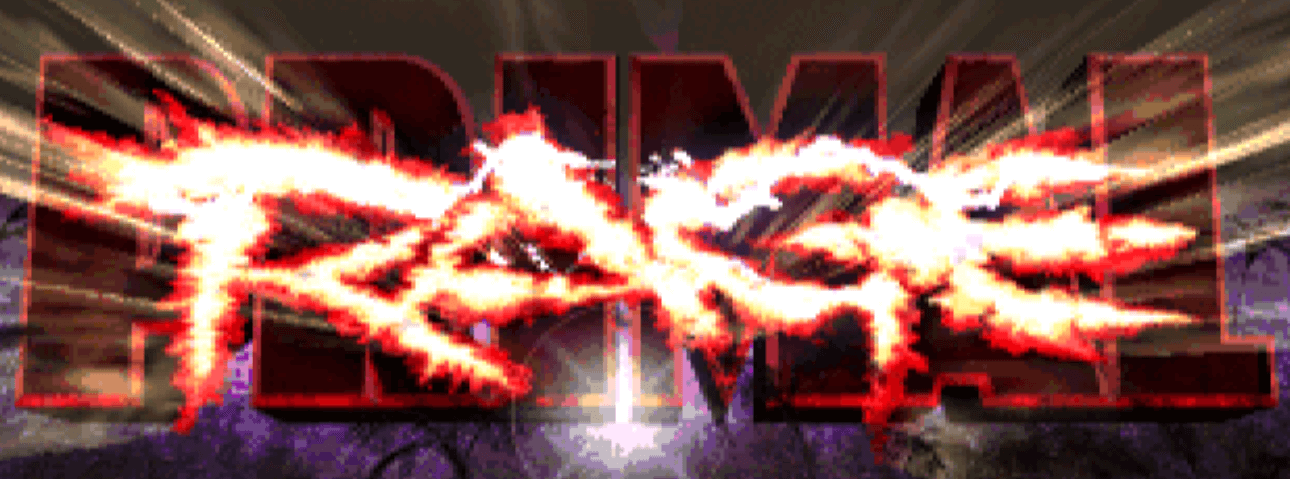
It was really astonishing to see this game become a reality considering the fact the original Primal Rage arcade game has never been made playable as of yet. Despite the original game being released in 1994, its never been made playable in MAME or any other emulator due to its unbreakable encryption.
Not only did Gruntzilla94 get the game working, but he and others later created modified versions of MAME4RAGE that featured cheat codes that unlocked the ability to change many of the game's aspects, including the color of character skins, the ability to switch seamlessly between the game's human-like avatar characters and their matching prehistoric beasts, and even unlock the game's end boss and lead protagonist “Necrosan” (a Dracolich – dragon like skeleton beast) as a playable character, among other features.
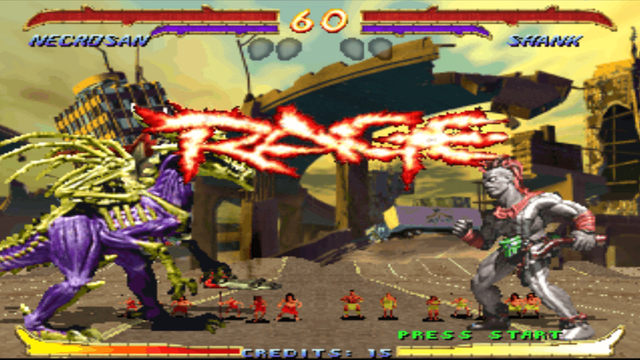
I first caught light of the release of MAME4RAGE back in February of 2017, shortly after Gruntzilla officially released the modified version of MAME that would run one of the world's most mysterious fighting games for the first time ever.
I've done a number of videos showcasing virtually all the game's characters up on Gamers Bay's channel on YouTube.
After having the chance to play and experience the game for myself, I have to say, its everything the original Primal Rage should have been and a whole lot more! Primal Rage II would bring forth a whole new set of human-like characters called Avatars, each coupled with one of the prehistoric god beasts from the original game. Atari had stayed tried and true to the original concept too, bringing back the prehistoric tribesmen from the original game. You could even eat the tribesman just as in the original.
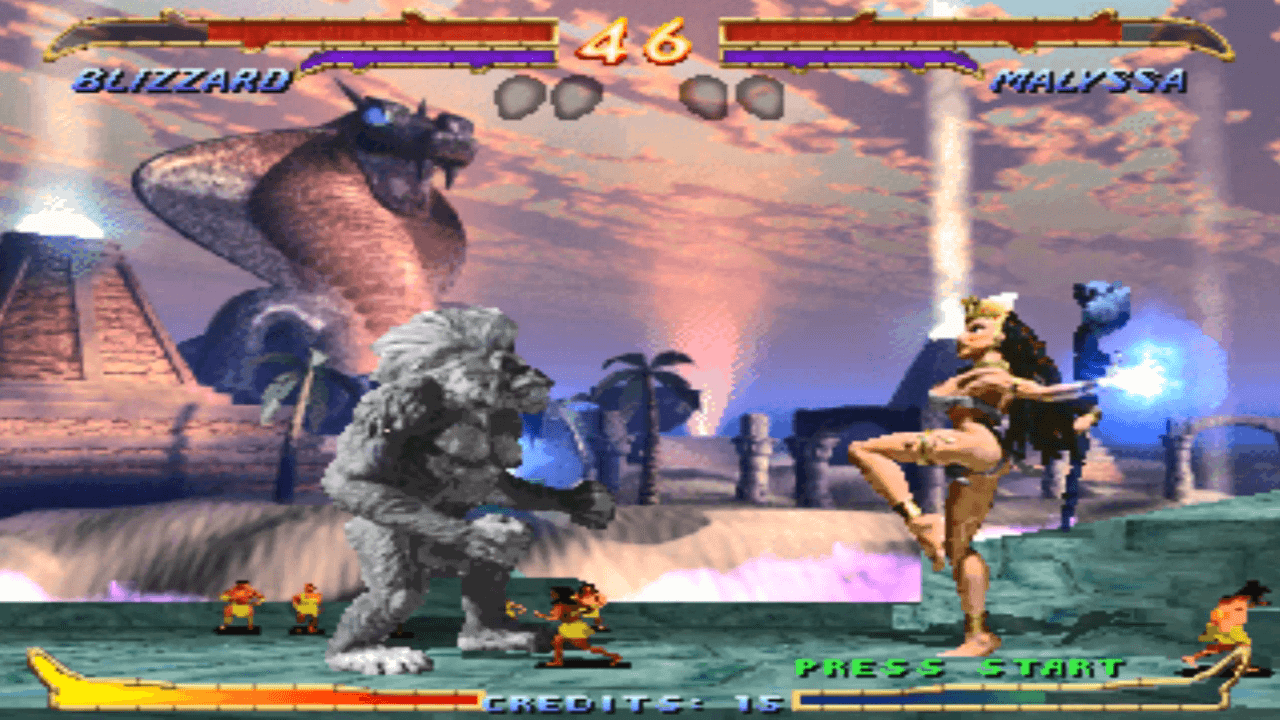
Primal Rage II boasted for far more polished graphical depictions of the original characters, adding for a whole new level of realism to the game series. The graphics like a mix between Mortal Kombat and Clay Fighter. Where the game really won-out was in terms of its now easier than ever to execute fighting maneuvers.
I learned a thing or two about the game's characters and how to better pull off some of their finishing combos by talking with Gruntzilla, who seems to know the game like the back of his hand.
Gruntzilla also put together a complete list of the characters with short bios, including comprehensive move lists for each of the characters, including the human-like Avatars. You can find out more about
MAME4RAGE at Gruntzilla's Urthrage Website.
Check out this video showcasing the end boss Necrosan as a playable character:
One last thing to note about this game is that its incredibly difficult! Atari put a lot of emphasis on the AI during this game's development, and as is typical of arcade games, your AI opponents do a considerable amount of damage per hit as compared to your own attacks. Likewise, accessing the game's settings menu from within MAME shows the ability change the difficulty settings, but this feature does not work. The modified cheat version (which is still out in the wild), does offer the ability to have unlimited health, but this kind of defeats the purpose of playing doesn't it?
5. The Last Blade (SNK)
When we think of the many classic SNK based fighting games that popped up during the glory days of 90's arcades, we often think of titles like Art of Fighting, Samurai Shodown, King of Fighters, or Fatal Fury. Astonishingly, what we don't hear about are well-rounded fighting titles like that of SNK's “The Last Blade!”
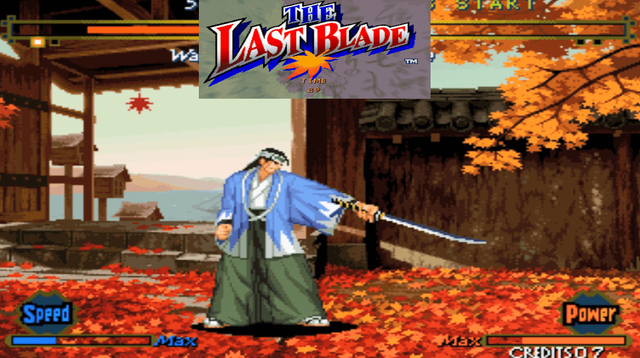
How on earth such an awesome fighting game like this managed to get overlooked is just baffling really. The Last Blade had all the hallmarks of the typical SNK fighting genre, with a play style that felt closely reminiscent with that of the Samurai Shodown series.
The game play surrounding The Last Blade was generally themed upon weapon based fighting tactics, although you did have kick attacks as well. One of the really interesting features was the ability to choose between power and speed during the character selection process. Choosing speed gave your character more maneuverability, including the ability to execute longer chain combos; while the power selection would sacrifice speed with the benefit of having more powerful attacks.
The game also featured power up attacks called “Desperation Moves.” One of the added benefits of choosing the power selection was the ability to execute “Super Desperation Moves”, a feature that wasn't available in speed mode. The power combo moves could due an incredible amount of damage, effectively off most all of a players life bar with just a single combo.
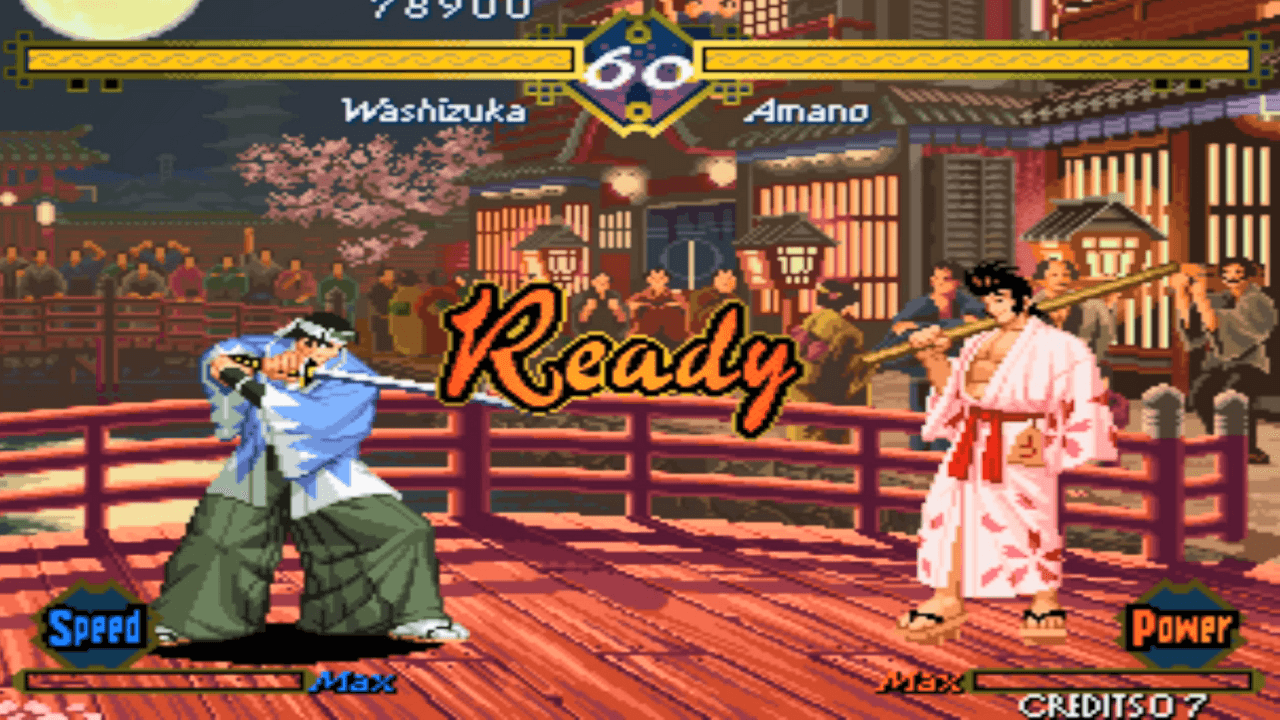
Another thing to note is that, just like with the typical SNK fighting titles, The Last Blade was an extremely challenging game, it represented a bit of a learning curve to understand the characters fighting maneuvers, and button sequences took precision and correct timing to pull off each of the characters combos. The characters in this game often differed wildly in terms of the button sequences required to pull off their fighting maneuvers, making it a challenge to learn them all.
6. Ninja Masters (SNK Neo Geo 1996)
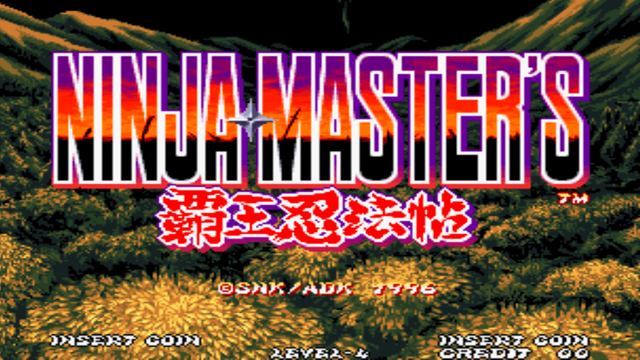
This was another widely overlooked SNK classic fighting game, Ninja Masters featured the ability to switch between hand-to-hand combat and weapons based fighting maneuvers with any of the games characters. The game was developed by SNK's own development arm Alpha Denshi (ADK).
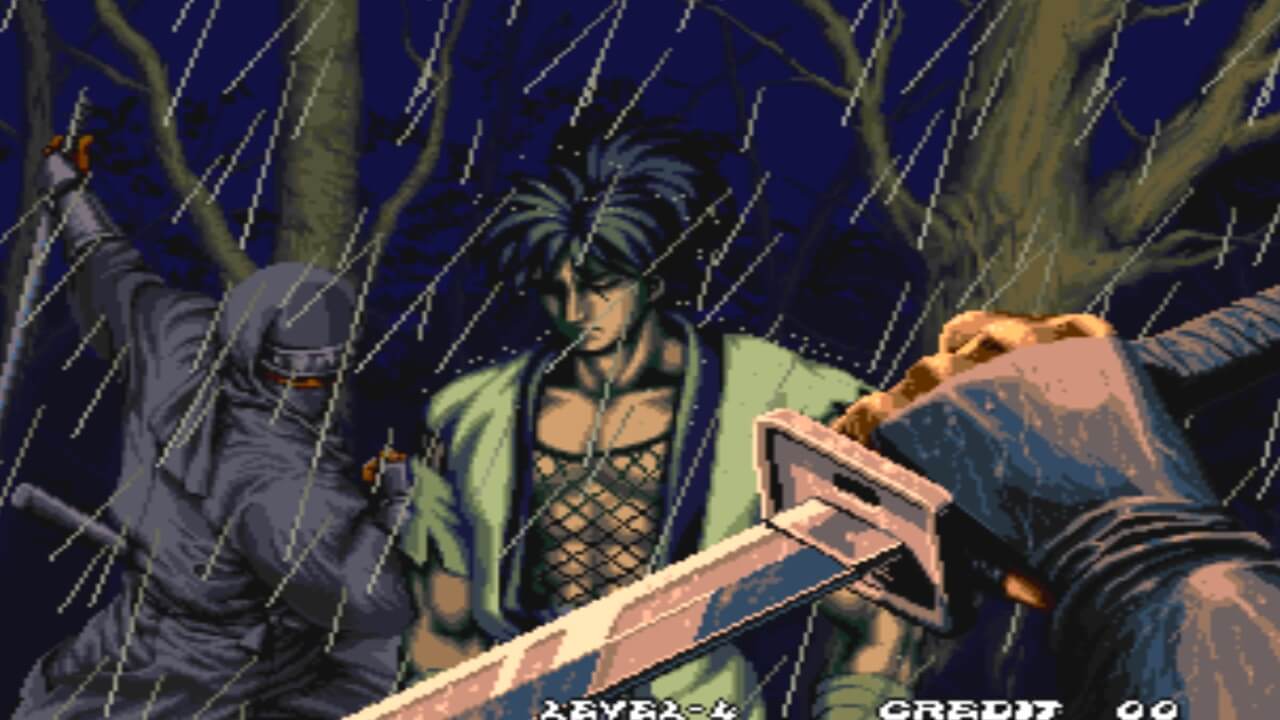
One cool aspect of this game was the fact the controls were so easy to get a handle on. Unlike many of SNK's fighting titles that often presented a steep learning curve, fighting maneuvers in this game mostly followed the typical Street Fighter concept.
Ninja Masters was also a lot more faster paced than titles like Samurai Showdown, where the focus was often more geared tactical fighting maneuvers and precision of button timing.
7. Dragoon Might (Konami)
When we think of Konami we often think of series like Castlevania or Contra, but what we don't often associate this old school game publisher with is classic arcade fighting titles. Dragoon Might was developed and published by Konami back in 1995, and was one of Konami's attempts at developing an arcade fighting game that could compete with the big boys.
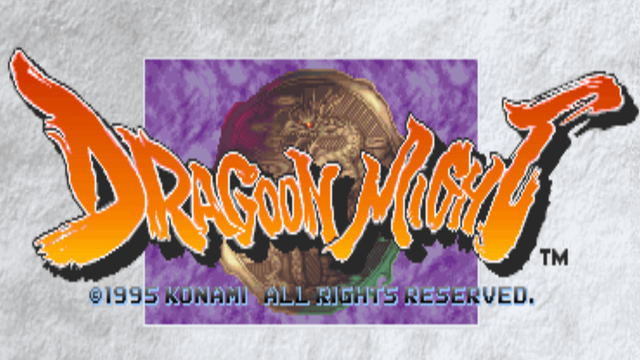
Konami made use of 2D sprite scaling for more impressive visuals, a feature of arcade game development that was most heavily used by publishers like Sega. Its too bad this game never really took off in arcades, as it featured really responsive controls that were quite impressive as compared to the typical SNK based fighting titles that felt a bit laggy in terms of responsiveness.
The game's story line is quite simple, as it encompasses a tournament where players compete for supremacy over a “Dragon Medallion.” As the legend goes, whosoever is able to obtain all the pieces of the medallion will be granted any wish. Defeating each of the game's 12 main opponents further unlocks an additional piece of the medallion.
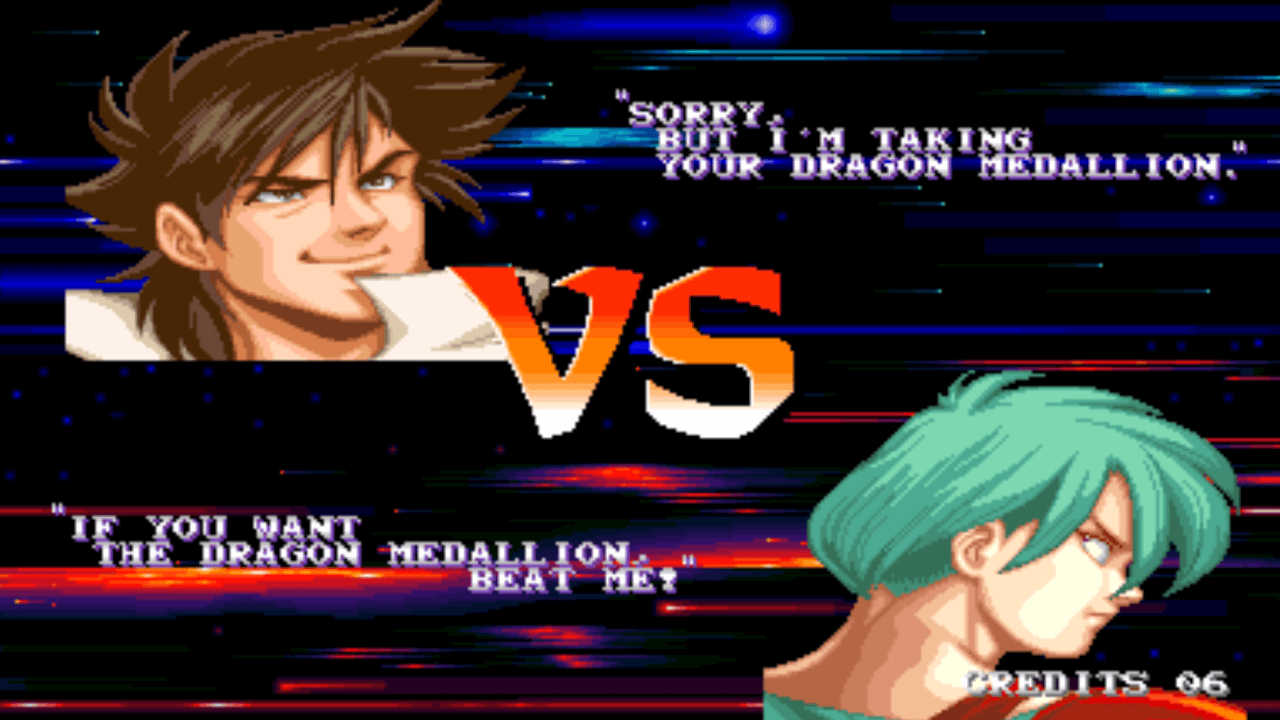
By the way, besides the game's name, dragons do play a significant role in this game. Notice in the video how Yamoto's fire attack unleashes the silhouette of a fire breathing dragon.
8. Fighting Layer (Namco)
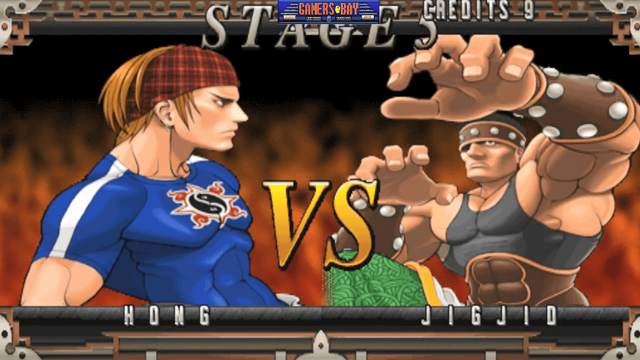
This classic arcade fighting game was developed by Arika back in 1998, and published surprisingly by Namco. Arika was the same creators of the long famed Street Fighter EX series, and Fighting Layer shared many characteristics to the EX series, both in terms of graphics and game play characteristics.
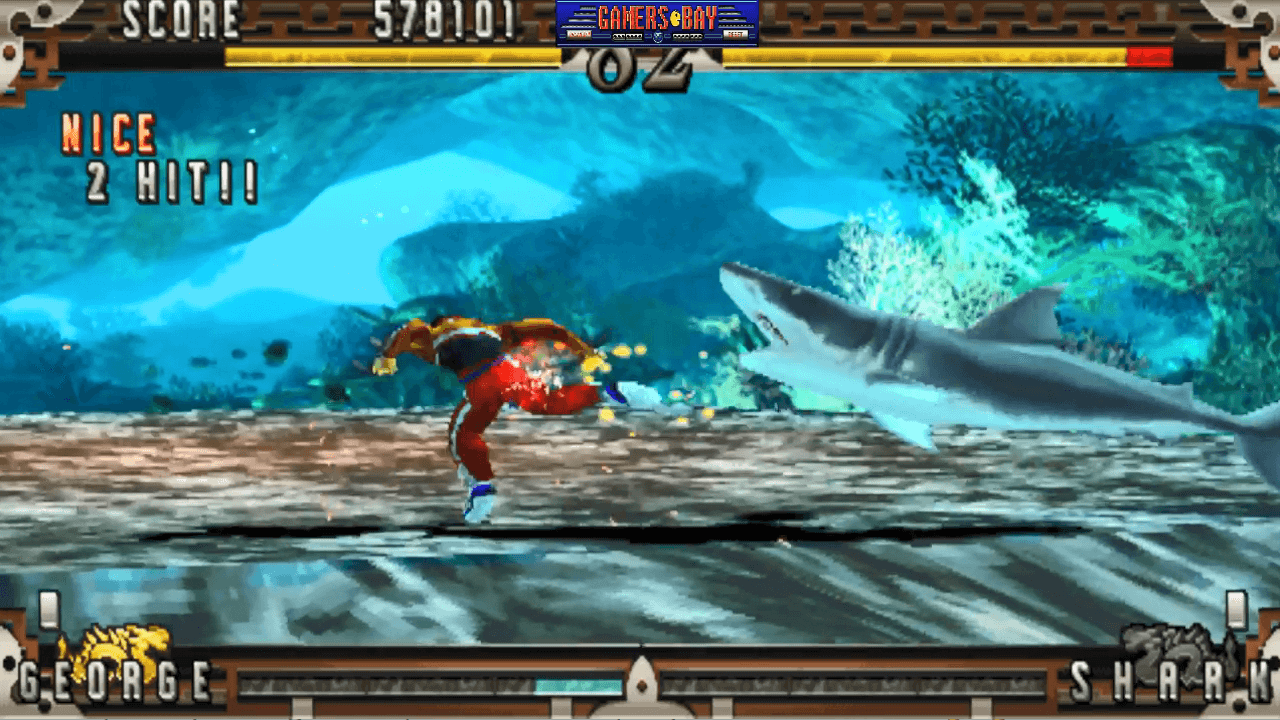
The game featured Excel Combos that were clearly taken from the Street Fighter EX series. These fighting maneuvers were executed in the exact same manner, where the player's movements turned into a blurry explosion of multi-colored sprites that flashed across the screen as they pulled of their excel fighting maneuvers.
What really set this game apart from the typical arcade fighting experience was the fact you had unique challenge stages, such as a fight with great white shark underwater! I never could beat that thing either, maybe you can pull it off!
One of the stark differences between Fighting Layer and its cousin Street Fighter EX series was the fact that the EX series was published by Capcom, while Fighting Layer was published by Namco. Despite the game's appearances, it actually played more like Sega's Virtua Fighter than it did the Street Fighter EX series; although the graphics were based on the EX theme for sure.
9. Plasma Sword: The Nightmare of Bilstein (Capcom):
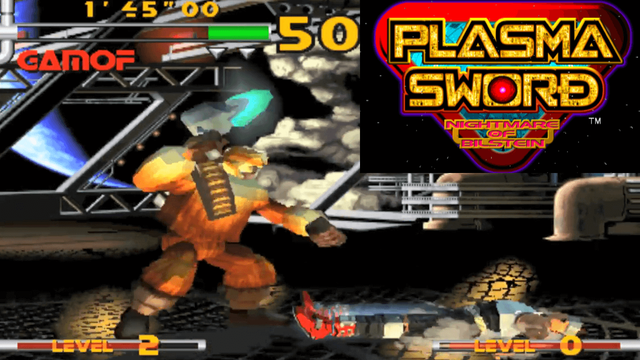
Developed and published by Capcom back in 1998, Plasma Sword was the updated sequel to Capcom's earlier fighting title “Star Gladiator.” The game was sort of a mix between Star Wars: The Masters of Teras Kasi and Bloody Roar. The game has some interesting characters, including a beats named Gamof that I would swear looks like a cross between Bigfoot and Chewbacca!
This game featured a some what 3Dimensional playing field to that seen in Tech Romancer, where players had the ability to side-step as to avoid incoming enemy attacks. The game also had a power meter called the plasma meter, and each of the game's characters boasted a unique plasma weapon to boot.
Another interesting feature in this game was the use of a “Plasma Field”, that would lock enemies into a boxed-in area, giving players the ability to unleash plasma attacks at close range when their power meters were full.
The name of Bilstein refers to the game's lead protagonist, a cyborg/human variant, of whom in the original game's story line was enlisted by the distant earth federation to develop a plasma weapon that would keep out rogue alien invaders from taking over earth.
Bilstein himself is actually a playable character in Plasma Sword, with several variants of him to play as.
To date, I've never actually seen this game in an arcade ever, and not sure I actually know anyone else who has either. Despite its lack of adoption by the North American arcade scene, Plasma Sword did
in fact see a console release on the Sega Saturn.
10. Street Fighter The Movie Arcade:
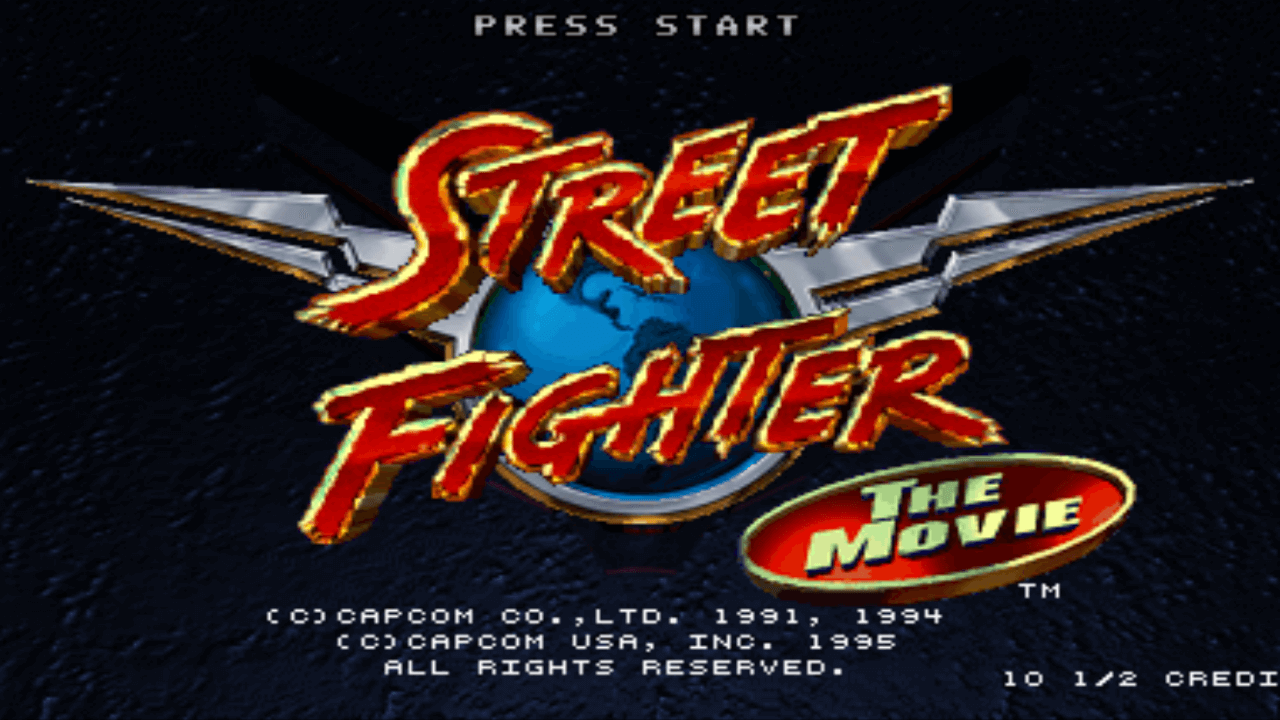
Some may be surprised to see a Street Fighter game on this list given its one of the most well known arcade fighting franchises of all time. Nonetheless, even this long-lived fighting series has its lesser known gems. The game was meant to be a tie-in to the live-action Street Fighter movie from 1994 that sought to depict many of the game series classic characters in a feature film.
The game was developed by Incredible Technologies, and published to arcades less than a year later in early 1995 by Capcom. Developers took on an approach of realism to the development of this game, with each of the game's characters being a mirror-image of their counterparts from the original film.
While the depiction of characters in the game was actually spot on, sadly, the game play felt somewhat unresponsive at times. Likewise, critics didn't seem to give this game any merit, with the bulk of its review scores being fairly low.
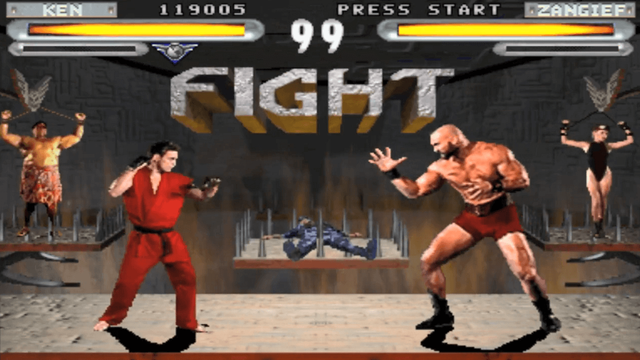
Nonetheless, I thought the game was fun to play, and it showcased the Street Fighter characters in a new and unique way by focusing on real human characters vs. the likes of the traditional cartoon like appearance gamers were used to seeing.
The developers really did do an excellent job of showcasing the film's cast as playable characters in the game. Characters such as M. Bison (played by Raul Julia, who sadly passed away after the making of the film), and Colonel Guile (Played by Jean Claude Van-Dam), were a spitting image of their representation from the movie.
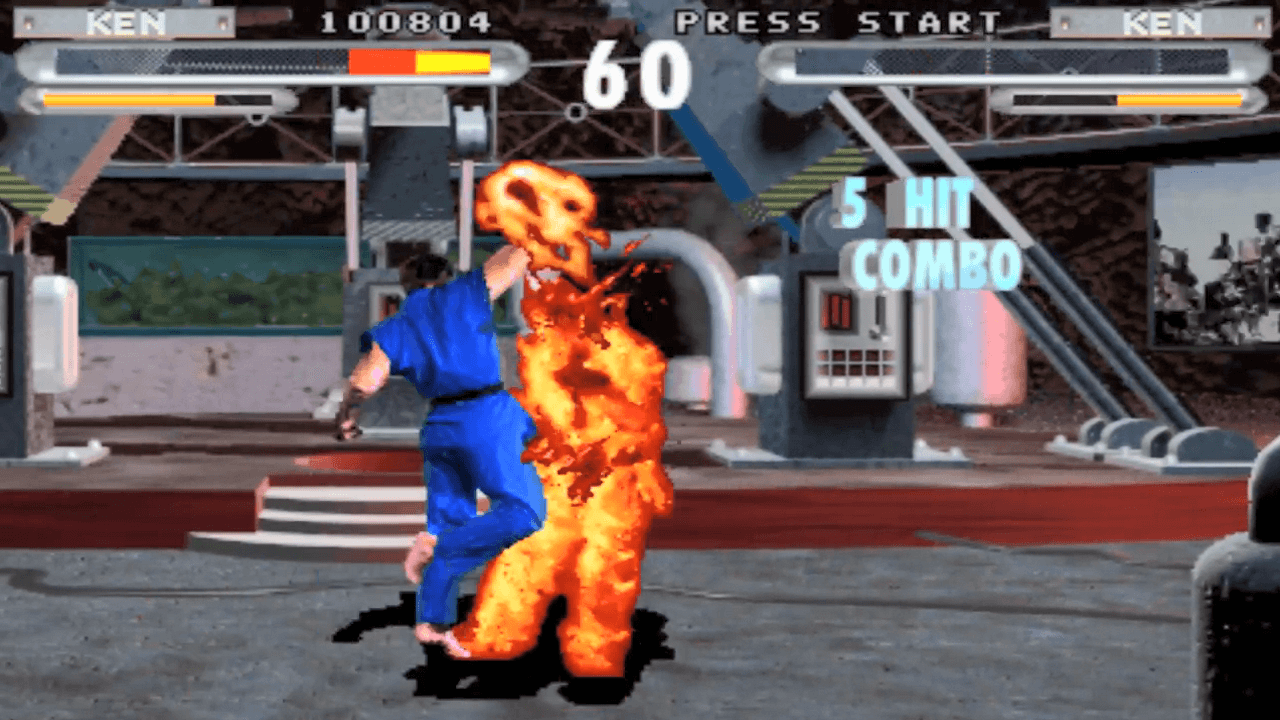
This game also saw a number of ports from the arcades to consoles, including a rare and harder to find port for the Sega Saturn, as well as the original Playstation. The Saturn version felt and played much like the original arcade version, while the Playstation version seemed to suffer a bit in terms of its graphics quality.
All being said, all the games we showcased here were incredibly fun to play classic arcade fighting titles I would highly recommend. If I were to compare these titles to the more notable series such as Mortal Kombat, Street Fighter, King of Fighters, and others, I'd say the majority of these games were just as good if not better than their better known counterparts. Part of the reason a majority of these games were so heavily overlooked likely had a lot to do with timing it seems. In the case of Mortal Kombat and Street Fighter, these series launched back in the early 1990's, giving them more time to grow with audiences, and both proved to be dynamic feats in terms of their cutting edge development for the time.
For instance, Midway took the concept of realism and the depiction of real human characters in gaming to the next level with the development of the first Mortal Kombat title. Likewise, Capcom practically wrote the book on fighting games, having been huge innovators in the game development world, who's creation of the original Street Fighter title back in 1987 would later pave the way for the modern day fighting game genre we see today.
Written and published by Daniel Imbellino - Co-founder of Gamers Bay! Feel free to connect with me on Google+:
https://plus.google.com/u/0/+DanielImbellino
Check out the Gamers Bay community on Google+: https://plus.google.com/u/0/communities/117402411718446204730
Gamers Bay's official brand page on Google+: https://plus.google.com/u/0/+GamersBay
Gamers Bay on Twitter: https://twitter.com/Gamerz321
Gamers Bay on YouTube: https://www.youtube.com/channel/UCT06RVKUhcWJ1S97GdShLyQ
Also check out Gamers Bay manager Michael Haney's content here on Steemit: @thezorch
Your post was resteem by Whale ResteemService @booster007
Keep it up!
All the best!
Send 0.100 SBD/steem For resteem over 4300+ followers / send 0.200 SBD/steem resteem over 10,200+ Follwers Send your link in memo ! @boostupvote Attached !
I remember playing one or two of those games at the Pizza Hut when I was a kid
Yep! It was fairly typical to see mini arcades at pizza parlors back in the day, especially at places like Pizza Hut. Back in the late 80's and early 90's it seemed as if practically almost all pizza parlors in America had arcades games of some sorts on hand. Today, you'd probably be hard pressed to see such scenarios as much.
They should bring them back to the pizza spots
Wow very well written! I loved reading through this all these games on this list save for Street Fighter the Movie which I watched you play a bit back are totally unknown to me. Hmm I do know Armored Warriors though which you mentioned here as I got the chance to play and show that recently. You are so lucky to have been around in the arcade era I wish I could time jump backwards to experience these in the arcades like you have must have been quite something.
Seeing this makes me wanna try a few of these games on this list as you know I play very badly at fighting games but man this makes me wanna grab mame and attempt to play some of these. Last Blade, Dragons Might and Ninja Masters caught my eye the most. Hmm maybe sometime I will pick some days and just sit down with some fighting games and attempt to tackle that major bump in my road in gaming and that is playing figting games especially ones that need a specific chain of button sequences to do stuff because there are so many great ones out there! I will be using this list as a reference for when I wanna try some fighting games!
Also the history of Primal Rage really interests me a whole bunch this was a game history I was not expecting you could probably do an entire blog dedicated to that little segment.
Oh, the days of the classic arcades of the 80's and 90's were truly an amazing experience I still treasure today. I plan to continue writing about this era and my own experiences with it for the foreseeable future.
As for Primal Rage II, it was the obscure fighting game the world could only dream of having the chance to play. Decades would go by before the world would finally have a chance to experience this long lost arcade treasure. After finally having the chance to play it myself, I was so confused as to why Atari scrapped the project. I would place my bets this game would've exploded in the arcades back in the mid 90's had it actually been finished.
The Primal Rage series also lives on thanks to things like Mugen, the fighting game engine that re-imagines so many classic fighting games in a new light. I plan to do some videos of the Primal Rage characters in Mugen at some point as well.
I really worked to death on this article, having spent two 12 hour days putting it together, but I love doing compilations and reviews like this. The best part was being able to include all the reviews and game play videos to showcase along with it. There's so many game reviews out there that fall short of actually showing what the games are like in real life. Pictures are great, but the inclusion of video makes the story a whole lot more compelling.
I like playing arcade fighting games
There's a lot of great ones out there, many of which never got ported to consoles, including some of the ones we showed here.
I will watchout for that
Thanks for using @bidception! This post was resteemed.
This post was upvoted and resteemed by @resteemr!
Thank you for using @resteemr.
@resteemr is a low price resteem service.
Check what @resteemr can do for you. Introduction of resteemr.
Release the Kraken! You got a 20.65% upvote from @seakraken courtesy of @djdaniel2020!
Congratulations, your post received 43.15% up vote form @spydo courtesy of @djdaniel2020! I hope, my gratitude will help you getting more visibility.
You can also earn by making delegation. Click here to delegate to @spydo and earn 95% daily reward payout! Follow this link to know more about delegation benefits.
3 posts resteemed